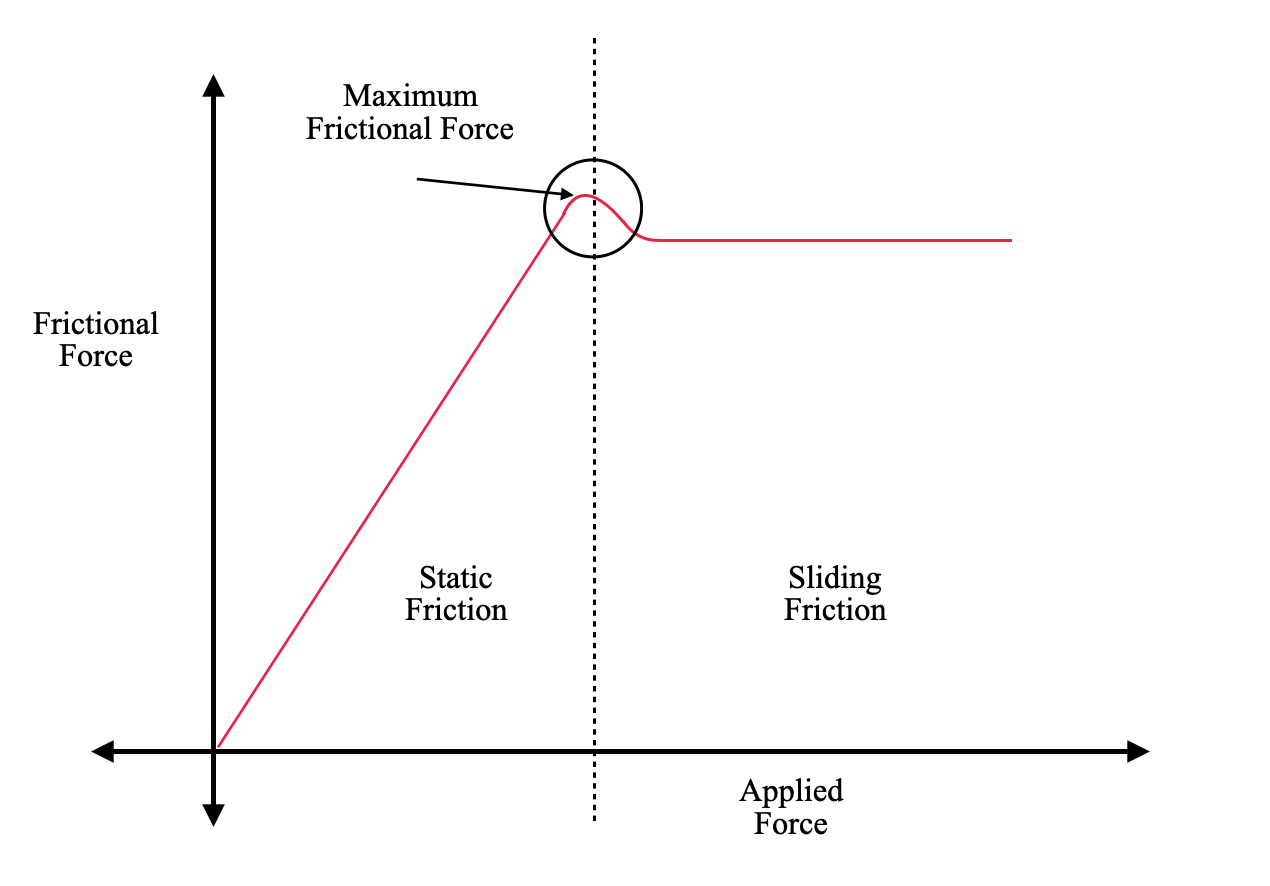
Explain why the sliding friction is less than the static friction.
Answer
589.5k+ views
Hint: Friction occurs due to the formation of microscopic bonds between two surfaces. When an object is moving on a surface, it experiences a sliding friction. When the object is at rest, and we are trying to push the object, the friction is called static friction.
Complete step by step answer:
Frictional force originates from the interlocking of two rough surfaces. When an object is kept on the rough surface, it rests on innumerable pointed sections of the surface. As the area is very small, the pressure rises to a high value.
The points of contact start to melt, and this gives rise to the friction. We define this quantity to be the frictional coefficient or 𝜇.
We can write the frictional force to be,
F=𝜇N
Where,
𝜇 is the frictional coefficient.
N is the normal force on the object.
The value of the frictional coefficient depends on the properties of both surfaces. If there are more interlocks between the two surfaces, the value of the frictional coefficient will be more.
When an object is at rest, and we are applying a force on the object, the value of the frictional force varies as shown in the following diagram.

As we can see, the static friction attains a maximum value before dropping down to a constant lower value.
This happens because the number of interlocks is much lesser when the object is already moving. As a result, we can say that,
Static frictional coefficient > Sliding friction coefficient
As the static frictional coefficient is slightly more than the sliding frictional coefficient, static friction is more than the sliding friction.
Note:
In general we refer to the static friction when we are talking about frictional force. The difference between the static force and frictional force is very small. Hence, we don’t consider the static and sliding friction to be different for our conventional cases. However, this is the reason why it is harder to set an object into motion in comparison to stopping it.
Complete step by step answer:
Frictional force originates from the interlocking of two rough surfaces. When an object is kept on the rough surface, it rests on innumerable pointed sections of the surface. As the area is very small, the pressure rises to a high value.
The points of contact start to melt, and this gives rise to the friction. We define this quantity to be the frictional coefficient or 𝜇.
We can write the frictional force to be,
F=𝜇N
Where,
𝜇 is the frictional coefficient.
N is the normal force on the object.
The value of the frictional coefficient depends on the properties of both surfaces. If there are more interlocks between the two surfaces, the value of the frictional coefficient will be more.
When an object is at rest, and we are applying a force on the object, the value of the frictional force varies as shown in the following diagram.

As we can see, the static friction attains a maximum value before dropping down to a constant lower value.
This happens because the number of interlocks is much lesser when the object is already moving. As a result, we can say that,
Static frictional coefficient > Sliding friction coefficient
As the static frictional coefficient is slightly more than the sliding frictional coefficient, static friction is more than the sliding friction.
Note:
In general we refer to the static friction when we are talking about frictional force. The difference between the static force and frictional force is very small. Hence, we don’t consider the static and sliding friction to be different for our conventional cases. However, this is the reason why it is harder to set an object into motion in comparison to stopping it.
Recently Updated Pages
The number of solutions in x in 02pi for which sqrt class 12 maths CBSE

Write any two methods of preparation of phenol Give class 12 chemistry CBSE

Differentiate between action potential and resting class 12 biology CBSE

Two plane mirrors arranged at right angles to each class 12 physics CBSE

Which of the following molecules is are chiral A I class 12 chemistry CBSE

Name different types of neurons and give one function class 12 biology CBSE

Trending doubts
One Metric ton is equal to kg A 10000 B 1000 C 100 class 11 physics CBSE

Explain zero factorial class 11 maths CBSE

What is 1s 2s 2p 3s 3p class 11 chemistry CBSE

Discuss the various forms of bacteria class 11 biology CBSE

State the laws of reflection of light

Difference Between Prokaryotic Cells and Eukaryotic Cells




